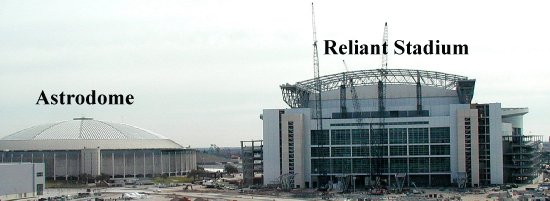Ordinary Engineering
Today, we look for ordinary engineering. The University of Houston's College of Engineering presents this series about the machines that make our civilization run, and the people whose ingenuity created them.
We're constantly tempted to explain engineering by talking about the Brooklyn Bridge or the Saturn rocket. Well, there are plenty of great works to talk about, but that can't reveal the fine structure of day-by-day engineering. The latest Mechanical Engineering magazine offers a far more helpful picture.
So let's turn pages: First, we've heard all the hype about the IT machine -- the two-wheeled vehicle that makes one appear to be riding about on a hand-pushed lawn mower. An article describes the computer chips that do the seemingly impossible job of keeping the rider in balance. The sensors that inform those chips, it turns out, work a lot like your inner ear.
Two articles deal with hydrogen-powered automobiles. The tone's much different from that in the popular press. The articles assume we're already interested in clean hydrogen fuel. The issue here is how to store hydrogen in the car. One article shows how we might release hydrogen from sodium borohydride into the engine. The other describes a small five-thousand-pound-per-square-inch hydrogen storage tank. Engineers have developed this wonderfully robust vessel from carbon-fiber-composite shells.
Read on: New design software combines stress analysis with design layout. It's been used to develop the specialized jaws of a grasping tool on a logging crane. A large die bends sheet metal to any shape we preset. We can program a new machine tool to turn out different parts at the push of a button.
I turn to the last article and find a sight that greets me every night on the way home from the University. It's the new Reliant Stadium, being erected next door to the famed Astrodome. The Astrodome was once called The Eighth Wonder of the World; now the new stadium dwarfs it.
Reliant Stadium, with its huge moveable roof, poses a hornets' nest of design problems, and each has to be addressed. One question is, "What will lightning do as it passes through the rollers that carry the roof?" Special tests show that even a twenty-thousand-amp lightning bolt will do no damage.

And so engineers work piece by piece. Citizens and politicians argue about hydrogen fuels, but the debate is hollow without means for handling hydrogen. Combat surrounds our new football stadium. But it is being built, and no one wants its moving roof to seize up the first time lightning hits it. While we debate the need for harvesting wood against the need for protecting forests, engineers develop means for picking up every log that's been cut.
A great gulf might seem to separate the arena of rhetoric from this world of problem-solving. But not so: these articles, filled with low-key, ongoing enthusiasm, take us to the place where every great work and difficult decision really does come to rest.
I'm John Lienhard, at the University of Houston, where we're interested in the way inventive minds work.
(Theme music)
Mechanical Engineering. Vol.124, No. 2, February, 2002. (See all the articles.)

(Photo by John Lienhard, February 16, 2002)